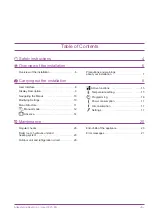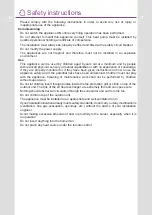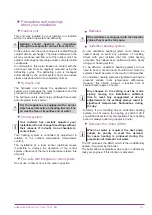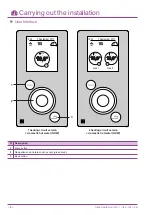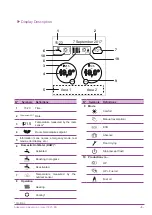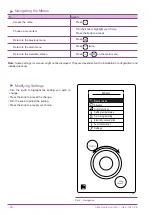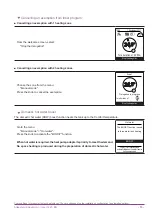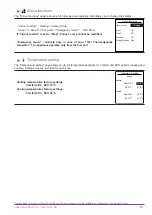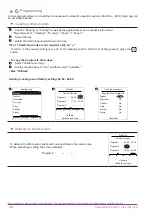
- 7 -
►
Precautions and warnings
about your installation
▼
Outdoor unit
This unit was installed by your installer in a location
where it is able to operate most efficiently.
Nothing should obstruct air circulation
through the evaporator and out from the fan.
In the outdoor unit, the surrounding air is cooled through
contact with an exchanger. The water contained in the
air may condense and flow out of the outdoor unit. The
outdoor unit can generate a large volume of water called
condensate .
In cold weather, this water freezes on contact with the
exchanger and must be regularly removed using the
defrosting cycles . The defrosting cycle is managed
automatically by the control system and can produce
steam emissions which are completely normal .
▼
Hydraulic unit
The hydraulic unit contains the appliance's control
system which manages the room temperature and the
production of domestic hot water .
The hydraulic unit is dual energy (air/water heat pump
and integrated fuel oil boiler).
Oil: Your appliance is equipped with a burner
which uses domestic oil (heating fuel oil). The
oil must be free of impurities and of water.
▼
Control system
Your installer has carefully adjusted your
installation. Do not change the settings without
their consent. If in doubt, do not hesitate to
contact them.
Your heating system is controlled by adjustment in
relation to the outdoor temperature (temperature
control).
The installation of a room sensor (optional) makes
it possible to improve the operation of the control
system (influence of the room temperature is taken into
account).
▼
Fan-coils with integrated control system
Do not use a room sensor in the area in question .
▼
Radiators
If the radiators are equipped with thermostatic
valves, they must be fully open.
▼ Underfloor heating system
•
A new underfloor heating system must initially be
heated slowly to avoid any problems of cracking .
Check with your installer that this initial heating
procedure has indeed been performed before freely
using your heating system .
•
To be efficient, underfloor heating systems do not
need to be very hot and never should be . At most, the
systems should be warm to the touch in cold weather .
•
An underfloor heating system's significant heat inertia
prevents sudden room temperature differences.
However, this intertia involves a reaction time of
several hours (approx 6 hours).
Any changes to the setting must be made
slowly, leaving the installation sufficient
time to react. Any exaggerated or abrupt
adjustments to the settings always result in
significant temperature fluctuations during
the day.
•
Similarly, if your dwelling has an underfloor heating
system, do not reduce the heating or switch it off if
you will be absent for only short periods . The reheating
period is always quite long (approx 6 hours).
▼ Domestic Hot Water (DHW)
When hot water is required, the heat pump
adapts its priority to meet the demand.
No space heating is produced during the
preparation of domestic hot water.
The HP produces the DHW, which is then additionally
heated, if required, by the boiler .
The boiler allows Legionella cycles to be run effectively
(ask your engineer if this function is activated).
Alfea Hybrid Duo Oil A .I . / Use / 1927- EN



